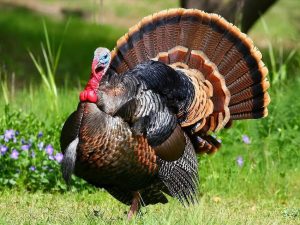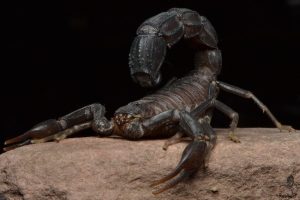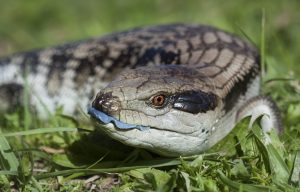Among the most famous pets in the reptile world, the Sulcata Tortoise is a species that cannot be overlooked. It ranks among the top three largest tortoise species in the world. This creature is sought after by many professional and amateur pet owners for its beautiful coloring and gentle personality. Join KnowAllAnimals to explore it in the following article!
Scientific Classification
- Kingdom: Animalia
- Phylum: Chordata
- Class: Reptilia
- Order: Testudines
- Suborder: Cryptodira
- Superfamily: Testudinoidea
- Family: Testudinidae
- Genus: Centrochelys
- Species: C. sulcata
1. Introduction to the Sulcata Tortoise
The Sulcata tortoise is the third-largest terrestrial tortoise in the world, with its body size surpassed only by the Galapagos tortoise and the Aldabra tortoise. Despite their large size, many people still love this adorable tortoise. They are very popular and widely kept as pets.
The Sulcata tortoise is a relatively active species. Of course, raising them in a semi-wild environment is best, but if you’re raising a Sulcata tortoise in a city and don’t have enough space, you have to figure out how to solve their “living” problem. A veterinarian can provide you with some useful information.
Today, the Sulcata tortoise has become a top choice for many people who choose to raise turtles. With their adorable appearance, they are loved by everyone. In addition, their lifespan is very long. If you raise one from a young age, it could be a pet that stays with you for a lifetime. Most Sulcata tortoise owners typically buy baby tortoises, with only a few choosing to get max-size Sulcata tortoises. However, if you want your tortoise to have a long lifespan, you must raise it properly.
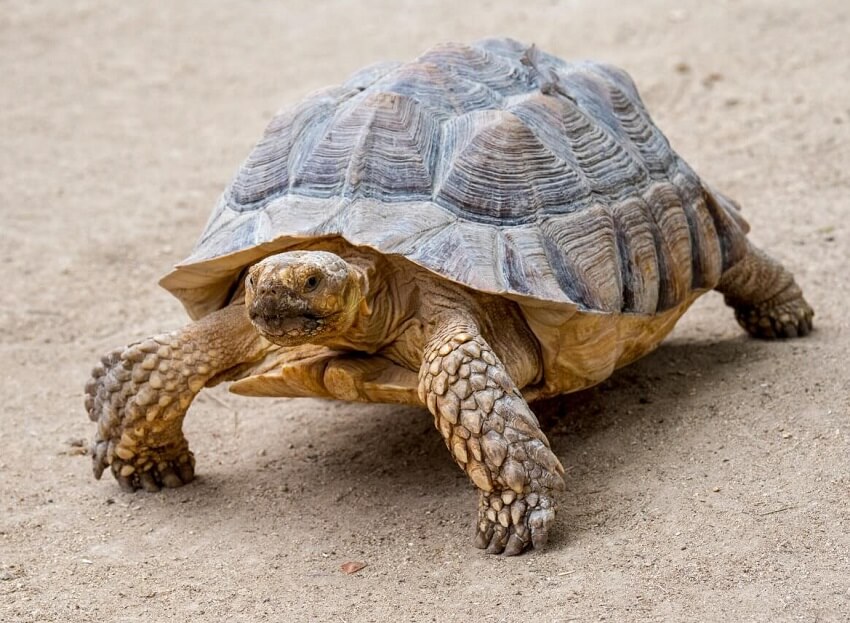
1.1. Sulcata Tortoise Appearance
When they are young, Sulcata tortoises are about 4–6 cm (1.5–2.5 inches) in size, but as adults, their bodies can reach a length of about 50 cm (20 inches). You can only determine their gender when their body length reaches at least 12 cm (5 inches).
Their shell is high, the top of their head has large symmetrical scales, and their skull is short. The upper jaw is connected to the cheekbones, and the upper jaw may or may not have a central bone. The top and bottom parts of the shell are connected, which gives it a sturdy feel. Their legs are cylindrical, very coarse, and strong. Their fingernails and toenails are no longer than two segments, and they have claws with no webbing or scent glands.
Their legs are covered with a layer of hard scales, which helps them dig burrows to find food or avoid the heat. In addition to their colors and appearance, their weight also attracts many pet owners.
1.2. Sulcata Tortoise Characteristics
The Sulcata tortoise is a gentle species with a mild personality that rarely attacks other animals. In the wild, they mainly live in hot desert areas, so they often have to dig burrows and bury themselves in the ground to regulate their body temperature.
Therefore, when raised in a man-made environment, they still maintain this habit in a glass or wooden enclosure. If they live in areas with moist soil, hard stone, and a lot of moisture, they can easily catch a cold or a runny nose while digging.
This is why, in their natural environment, only about 2 out of every 100 tortoises survive.
In addition, a smooth, hard stone floor will not provide the necessary traction for the tortoise to walk and stand. The solution is to mix coconut coir and pine bark into the enclosure to ensure the humidity is at a moderate level and to prevent diseases.
This tortoise species has a very long lifespan, with an average of 50–150 years.
1.3. Sulcata Tortoise Distribution
In the wild, Sulcata tortoises live in the savannas of North and Central Africa, with populations in countries like Ethiopia, Sudan, Senegal, Mali, and Chad. They are especially skilled at digging burrows. To avoid the hot sun, these tortoises are most active during the early morning and at dusk each day.
They also prefer to eat in the early morning. Therefore, when you are choosing a Sulcata tortoise to buy, it’s best to do so in the early morning. This way, you can observe their mental state and eating habits, and check their health and for any diseases.
1.4. Sulcata Tortoise Habitat
The adaptability of a Sulcata tortoise to its environment will affect its health. For example, a lack of light can be a cause of shell flattening, a complex problem with environmental factors as a key component. The following is a guide on how to arrange the necessary environment for a Sulcata tortoise.
In reality, Sulcata tortoises are not very demanding about their living environment. They don’t have many requirements regarding temperature, humidity, and water temperature, unlike other turtle species. They are relatively easy to raise. This pet tortoise has a lively and active personality, so you should use a wooden box designed for reptiles as an enclosure.
It’s best to prepare an enclosure that is 80 cm long for a young Sulcata tortoise. This is because Sulcata tortoises grow very quickly. As long as it adapts to its new environment, a tortoise will grow at a rate of 0.5–1 cm per month, provided it is given a sufficient food supply.
Therefore, you need to provide a slightly larger living space, and it will be more convenient to replace the enclosure with a larger one after two or three years or to use a 1.2-meter enclosure from the beginning.
1.5. What Do Sulcata Tortoises Eat?
Sulcata tortoises are herbivores. Their ideal food includes various types of fodder for livestock. For example, they love to eat dandelion greens, clover, and alfalfa. They also enjoy lettuce, cabbage, carrots, and pumpkin. In addition to these, you can also feed them various flowers and Timothy hay. Furthermore, succulent plants are also suitable food for this tortoise.
Sulcata tortoises have a slightly higher requirement for their living environment. Therefore, if you want to raise one, you must carefully consider it before you buy. You need to be patient and provide them with a suitable living environment. In addition, the price of a Sulcata tortoise is not cheap, so once you have one, you need to care for it meticulously.
How you feed your African Sulcata tortoise is also a matter that needs special attention. You should follow the principle of “eating small, frequent meals.” However, tortoises at different stages have different feeding methods.
The owner should design an appropriate diet based on the tortoise’s actual growth. Feed them a variety of foods daily and supplement them with calcium, phosphorus, vitamins, and other nutritional supplements. Giving them too much animal protein will lead to liver and kidney diseases.
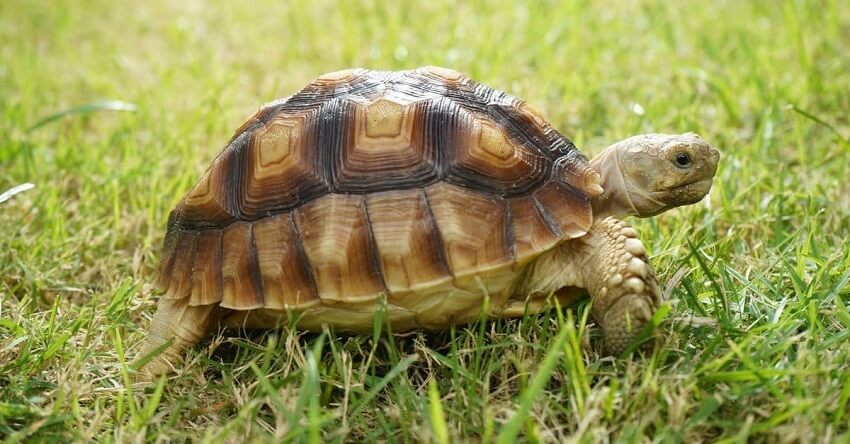
2. Tips for Raising a Sulcata Tortoise
As mentioned above, tortoises can live for up to 100 years, so you need to prepare for a long-term plan. In fact, many experts have passed away before they could accurately determine the lifespan of this animal. Here are some things you should keep in mind:
2.1. The Tank
To provide a comfortable and healthy environment for your tortoise, you need to make a serious investment in a suitable enclosure. A standard enclosure should have a width of at least 1.2 square meters (13 square feet) to ensure there is enough space for it to move around.
The substrate can be sawdust, coconut fiber, or other clean, fertilizer-free soil. If you have the means, you can also place some small rocks inside for the tortoise to file its nails on.
2.2. Sulcata’s Light Needs
For a Sulcata tortoise to survive, it must be exposed to light for a long time. Only with UVB rays can they synthesize Vitamin D3. And Vitamin D3 is the substance that promotes calcium absorption as the tortoise’s shell grows.
Therefore, normal outdoor sunlight is essential. If you cannot provide direct sunlight, you must equip the enclosure with UVA and UVB reptile lamps. The efficiency of the UVA light should be based on the size of your enclosure. For UVB, you can use a lamp with a rating of 8.0 or 10.0.
If you cannot provide natural sunlight outdoors, you must provide a full-spectrum UVB lamp and a heat lamp for your tortoise from the time it is a baby until it is an adult. Keep in mind that sunlight passing through glass or a window does not provide UVB rays.
Most common window glass will filter out all beneficial light, including UVB. UVB is essential for this animal. It creates Vitamin D3, which helps the shell grow healthily and aids in calcium absorption. Remember, not all so-called “full-spectrum” lights provide UVB light, and sunlight is always the best option.
It’s best to consider using a combination of a full-spectrum lamp and natural sunlight. This tortoise species needs a lot of sunlight every day, so you must have a UVB lamp prepared for the winter and be able to use it at any time.
2.3. Controlling the Temperature for a Sulcata Tortoise
In a tortoise enclosure, the daytime temperature should be in the range of 28–32°C (82–90°F). There should be a hot spot with a temperature in the range of 35–38°C. The nighttime temperature should be in the range of 24–26°C (75–79°F). The Sulcata tortoise is a desert animal that is adapted to a hot, dry climate. However, the temperature should not exceed 40°C.
When they get too hot, they will sweat on their shells, secrete a lot of saliva, and spray saliva onto their forearms to cool down. However, for a tortoise, the sun is the best source of heat from above. But you must make sure that the temperature of the heat source above the tortoise’s enclosure is not too high.
The Sulcata tortoise is quite sensitive to temperature. Their preferred temperature is around 27–35°C (81–95°F). You can place a thermometer inside the enclosure to easily monitor the temperature changes at any time. Young tortoises prefer a dry environment, high temperatures, and a suitable temperature range.
You can install a vacuum lamp inside the enclosure to provide a basking spot. The temperature of the basking spot should be around 32–35°C (90–95°F). In the winter, you can add another heat lamp. Or you can lay down a heat mat to maintain the temperature.
Choose a suitable substrate. After you have prepared the enclosure, you also need to prepare a substrate for the tortoise. Sulcata tortoises like to dig burrows, where they will create a small, comfortable space. The temperature and humidity in this small space will be at their most satisfying. You can choose a substrate made of pine bark, a substrate specifically for reptiles, coconut shell pieces, etc.
2.4. Common Diseases
Pyramiding
The most obvious sign of this disease is that the scutes on the tortoise’s shell bulge upwards instead of staying flat. Aesthetically, it may look quite nice, but if not treated early, it will cause a permanent deformity that cannot be cured.
Calcium Deficiency
The main reason for this is that the daily food intake does not have the necessary amount of calcium, which prevents the scutes from developing as expected.
Calcium Excess
When an owner supplements the diet with too much calcium but does not let the tortoise bask under a lamp, its body cannot absorb the calcium. When calcium levels accumulate for too long, it can lead to pyramiding.
Urates
This is a kidney stone disease in tortoises, caused mainly by high levels of uric acid in their blood. The most obvious symptom is that the tortoise’s urine is cloudy. If the tortoise is soaked in water, it will excrete a small amount of urates each day.
Initially, the urates are relatively soft and will be excreted, but over time, they will become hard and dry, and will accumulate in the body.
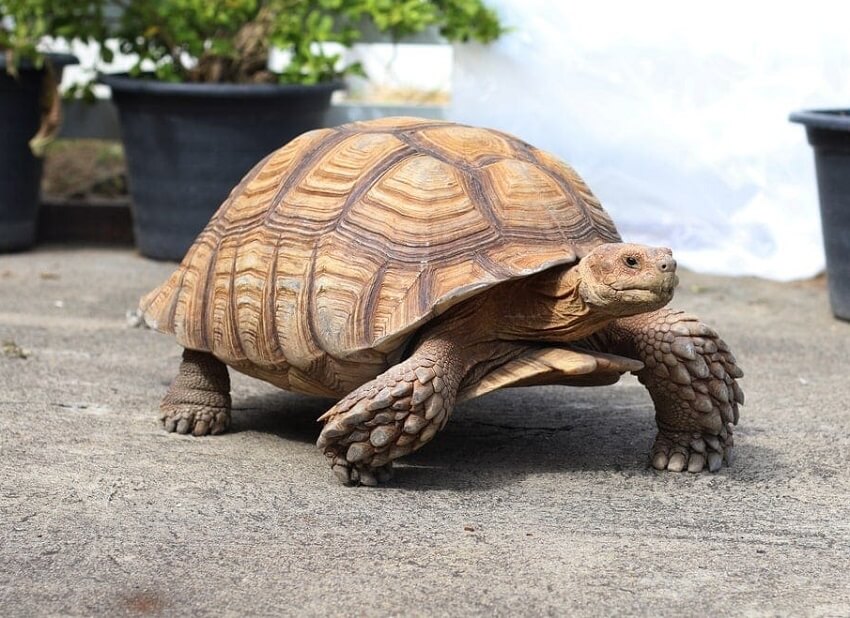
3. What Is the Cheapest Sulcata Tortoise Price?
Most of the Sulcata tortoises sold on the market are taken from the wild. The selling price varies depending on their health, appearance, behavior, and physical condition. Specifically:
- A 5–6 cm (2–2.5 inch) tortoise ranges from $50–$60 per tortoise.
- A 15–20 cm (6–8 inch) tortoise is more expensive, ranging from $1,000–$1,100 per tortoise.
Frankly, this price is not high. If you really want to own one, you should decide to buy as soon as possible.
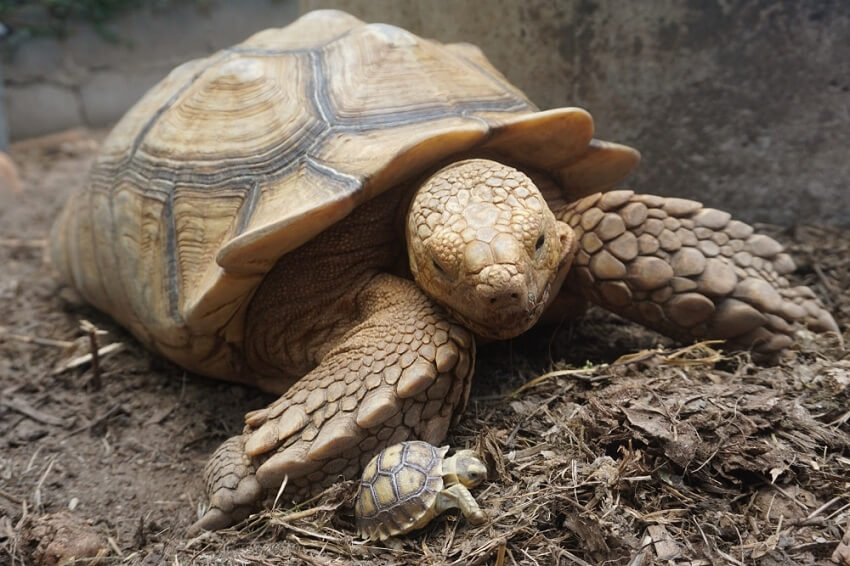
4. FAQs
1. How long do Sulcata tortoises live?
Sulcata tortoises can live 50 to 80 years or more with proper care, making them a long-term commitment for owners.
2. What do Sulcata tortoises eat?
They mainly eat grasses, hay, and leafy greens. A high-fiber, low-protein diet is essential to keep them healthy.
3. How big can Sulcata tortoises get?
Adult Sulcata tortoises can weigh between 70 and 150 pounds (32–68 kg) and measure up to 30 inches (76 cm) in shell length.
4. Can Sulcata tortoises be kept indoors?
While young Sulcata tortoises can be kept indoors, adults require a large outdoor space with a warm and dry environment.
At first glance, the Sulcata Tortoise might seem easy to care for. However, raising one is not so simple. Before and after getting one, owners need to consider everything very carefully and prepare everything well. This is because once you commit to raising one, it’s for the long term. The lifespan of a tortoise can last an entire human lifetime. Thank you for reading this article from Know All Animals.
Reference: https://en.wikipedia.org/wiki/African_spurred_tortoise

